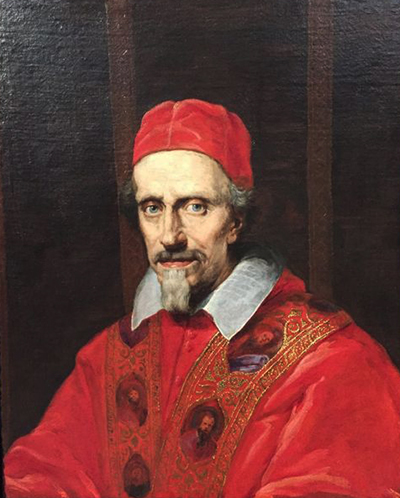As well as his paintings including the celebrated Portrait of Pope Clement IX, Gian Lorenzo Bernini was also renowned as perhaps the best sculptor of the 17th century and is considered the master of the Baroque style.
Born in Naples in 1598, Bernini trained as a sculptor under his father from an early age and showed a prodigious talent from the outset also becoming prolific in painting and architectural works. Quickly gaining the patronage of highly influential religious figures such as Pope Urban VIII. His architectural works included a range of chapels, churches and secular buildings and his other interests in theatre and plays prompted him to design stage sets and theatrical objects.
Bernini's artistic development in terms of painting began in his late teens when he undertook commissioned work from the art-loving Cardinal Scipione Borghese, and these early portraits set the scene for other commissions and were received with many accolades from admirers of his work. Bernini became recognised and acclaimed to such an extent that he was knighted in 1621, and with his talent and strong Catholic faith he frequented high level papal and royal gatherings and became feted throughout Italy and beyond.
Part of Bernini's ability included his penchant for dramatic themes with characters that show vivid emotions and a sense of grandeur such as some of his key sculptures including the Ecstasy of Saint Theresa, David and Apollo and Daphne. As with creative people of his era Bernini was influenced by the Mannerist style of art. This entailed a move away from what many of his generation viewed as rigid and outmoded medieval styles and beliefs and a tendency to distortions of perspective and scale and a use of brighter, sometimes even gaudy colours. In sculptural terms Bernini used this style to create dynamic compositions that can be seen and appreciated from many angles.
The painting of Pope Clement IX shows some of his dramatic style and the Mannerist trait of the figure dominating the majority of painting, and the rich velvet of his gown and cap in startling shades of red and gold are shown in stark relief to the dark background. His eyes seem to pierce beyond the painting and his complexion is perfectly captured and adds a further lifelike quality. As with his sculptures Bernini tried to create a dramatic effect that would engage the onlooker on a number of levels.
Even though some of Bernini's work is idealised and dramatic, in his portraits - and particularly in the painting of Pope Clement IX - Bernini manages to capture the spirit and animation of the individual. The expressiveness of his subject and the perfect tones of the skin and shading of the face, together with the ceremonial robes, all capture the dignity and status of the sitter but do not lose any of his humanity as he regards us with a keen and steady gaze.




